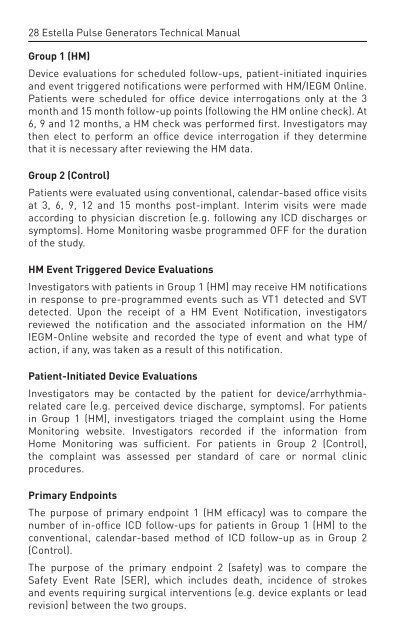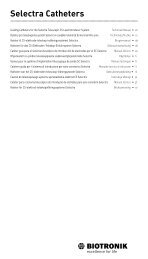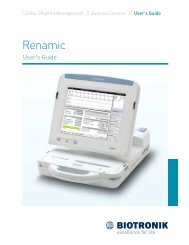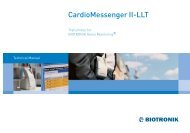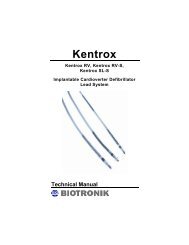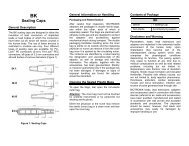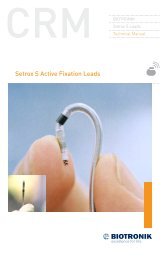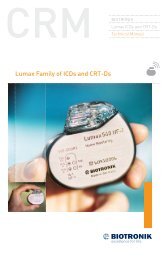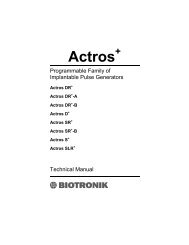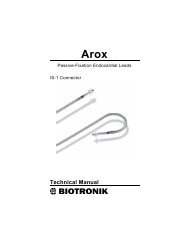Estella Pulse Generators - BIOTRONIK USA - News
Estella Pulse Generators - BIOTRONIK USA - News
Estella Pulse Generators - BIOTRONIK USA - News
You also want an ePaper? Increase the reach of your titles
YUMPU automatically turns print PDFs into web optimized ePapers that Google loves.
28 <strong>Estella</strong> <strong>Pulse</strong> <strong>Generators</strong> Technical ManualGroup 1 (HM)Device evaluations for scheduled follow-ups, patient-initiated inquiriesand event triggered notifications were performed with HM/IEGM Online.Patients were scheduled for office device interrogations only at the 3month and 15 month follow-up points (following the HM online check). At6, 9 and 12 months, a HM check was performed first. Investigators maythen elect to perform an office device interrogation if they determinethat it is necessary after reviewing the HM data.Group 2 (Control)Patients were evaluated using conventional, calendar-based office visitsat 3, 6, 9, 12 and 15 months post-implant. Interim visits were madeaccording to physician discretion (e.g. following any ICD discharges orsymptoms). Home Monitoring wasbe programmed OFF for the durationof the study.HM Event Triggered Device EvaluationsInvestigators with patients in Group 1 (HM) may receive HM notificationsin response to pre-programmed events such as VT1 detected and SVTdetected. Upon the receipt of a HM Event Notification, investigatorsreviewed the notification and the associated information on the HM/IEGM-Online website and recorded the type of event and what type ofaction, if any, was taken as a result of this notification.Patient-Initiated Device EvaluationsInvestigators may be contacted by the patient for device/arrhythmiarelatedcare (e.g. perceived device discharge, symptoms). For patientsin Group 1 (HM), investigators triaged the complaint using the HomeMonitoring website. Investigators recorded if the information fromHome Monitoring was sufficient. For patients in Group 2 (Control),the complaint was assessed per standard of care or normal clinicprocedures.Primary EndpointsThe purpose of primary endpoint 1 (HM efficacy) was to compare thenumber of in-office ICD follow-ups for patients in Group 1 (HM) to theconventional, calendar-based method of ICD follow-up as in Group 2(Control).The purpose of the primary endpoint 2 (safety) was to compare theSafety Event Rate (SER), which includes death, incidence of strokesand events requiring surgical interventions (e.g. device explants or leadrevision) between the two groups.


